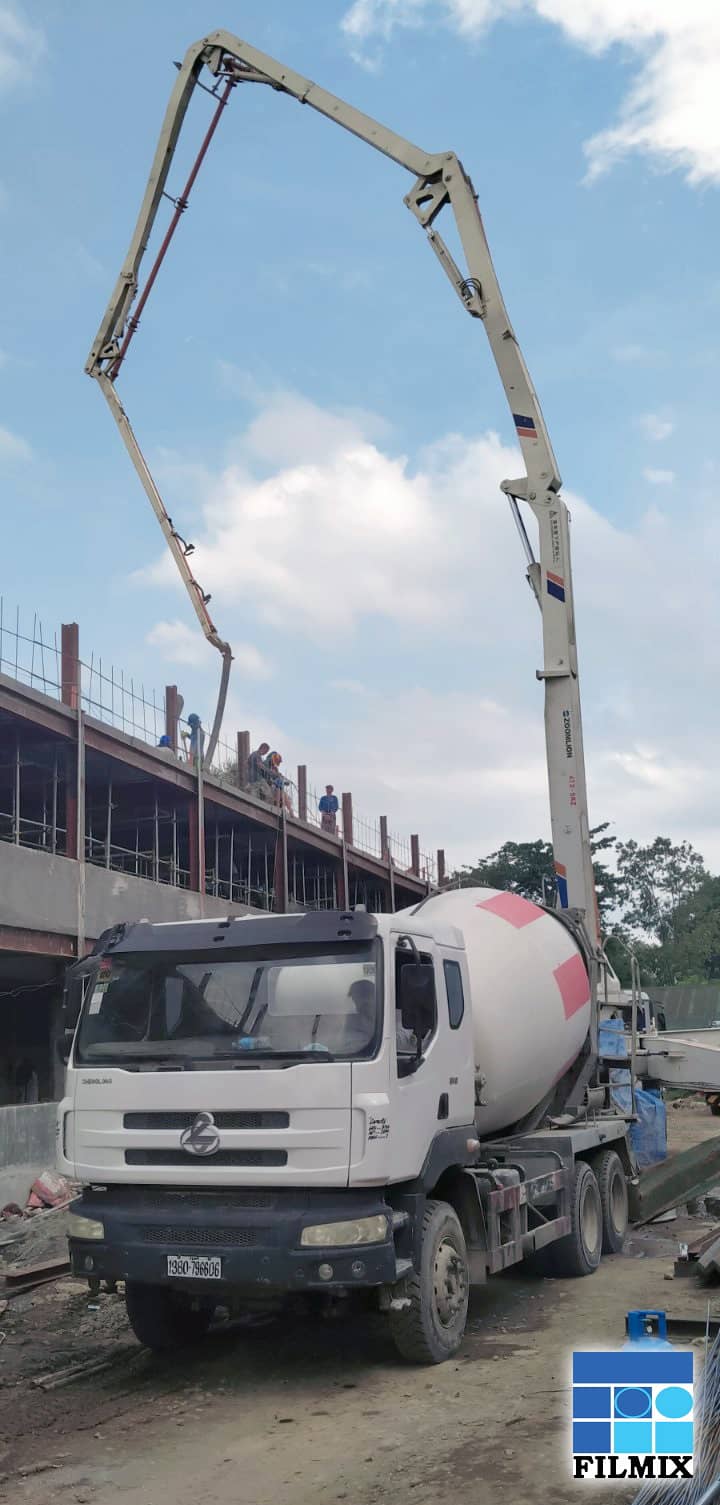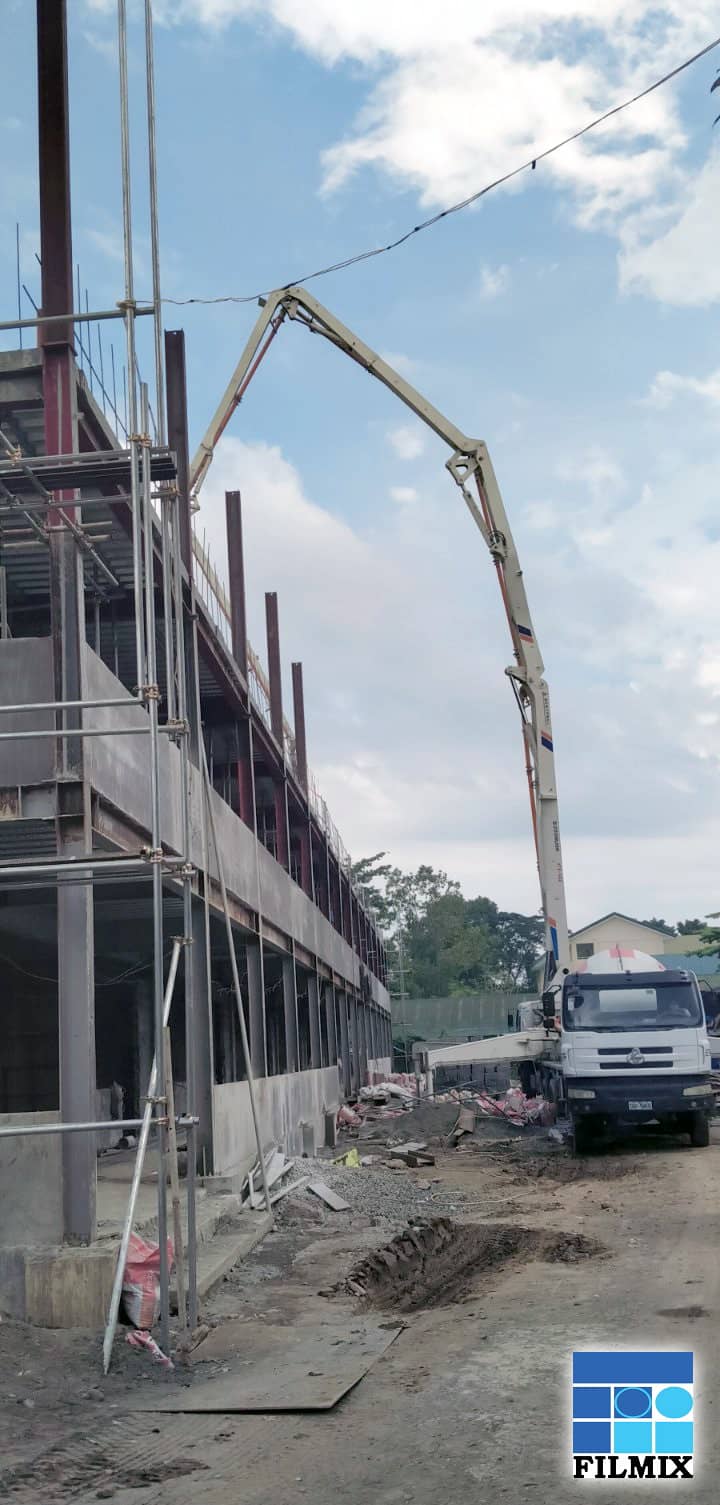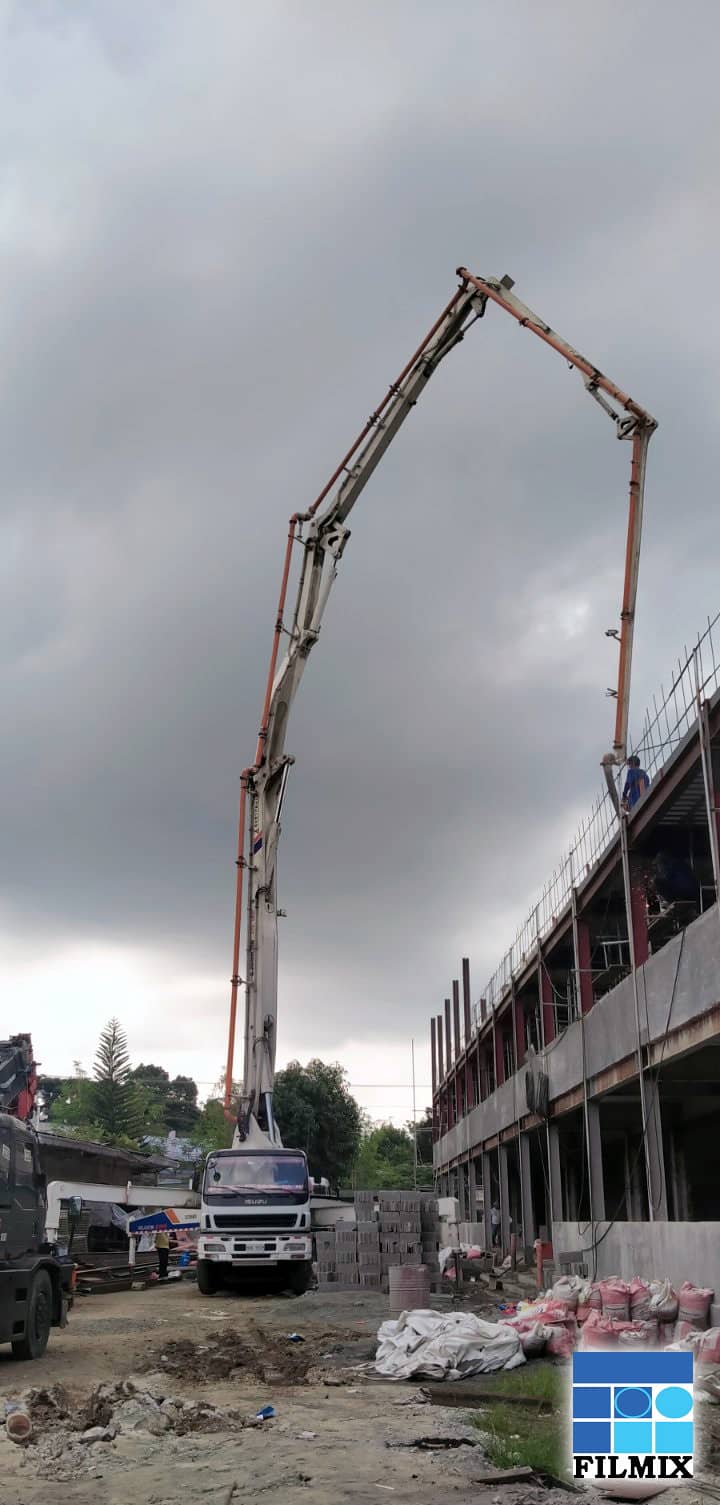Filmix pours ready mix concrete for a school building construction project. The operation takes place at Calinan Central Elementary School in Davao City. Project is a proposed 3-storey, 18 classroom building.
See our progress below. More to follow soon.
Random Concrete Facts
1. Concrete is the most-used material in the world
Concrete is utilized more than any other material on the planet. This may be due to the fact that the aggregates and water needed to make concrete are almost universally available. However, it may come as a surprise to learn that 20 billion tons of concrete are used every year. China is the world’s greatest consumer, accounting for half of all concrete produced annually!
2. Concrete was named by the Romans
The word “concrete” is derived from the Latin word “Concretus,” which roughly translates to “grow together.”
3. Incredibly high compression strength
Concrete has a pressure range of 3,000 to 7,000 psi (pounds per square inch), although it can reach 20,000 psi. The fact that the Colosseum, Hadrian’s Wall, and the aqueduct at Pont du Gard in southern France are all still intact is proof that concrete was used in their construction. It becomes much more strong and rigid when strengthened with steel.
4. The Ancient Romans perfected concrete – and it still stands today
It was formed naturally twelve million years ago in Israel, and the Ancient Egyptians utilized a type of concrete in the Giza Pyramids, but it was the Romans who perfected the art of concrete. The Pantheon in Rome, which was completed in 120 AD, is still the world’s biggest unsupported concrete edifice.
5. Concrete and cement are not the same
This is one of the most common misconceptions regarding concrete. To think that “concrete” and “cement” are interchangeable is like to arguing that “flour” and “cake” are interchangeable. Only around 10-15% of concrete is made up of cement, which is largely made up of lime; between 60 and 65 percent is made up of an aggregate like gravel or sand, and 15-20% is water.
6. Concrete was used to detect enemy aircraft in the Second World War
Surprisingly, at the start of WWII, concrete “sound reflectors” were utilized to provide early notice of approaching aircraft. Initially, they were equipped with microphones and had a range of roughly 27 miles.
Have you learn something new from this article? Stick around for more facts and trivia regarding concrete!








Leave A Comment